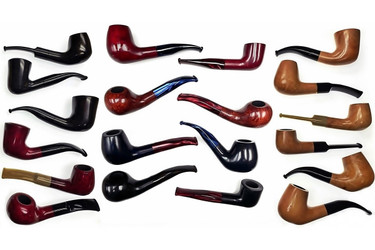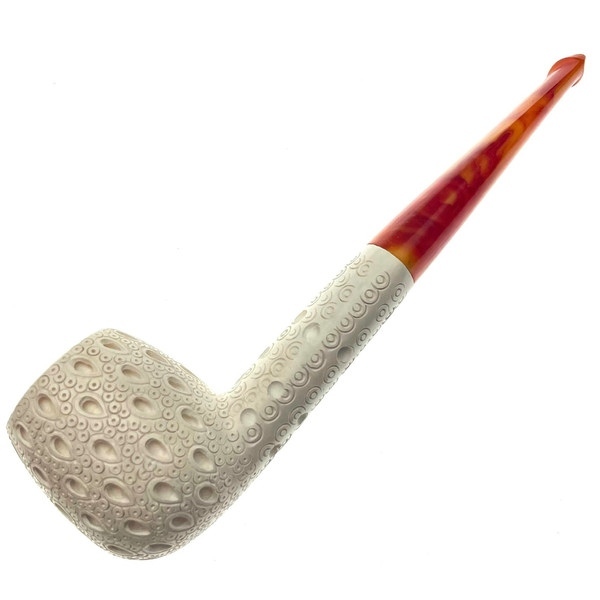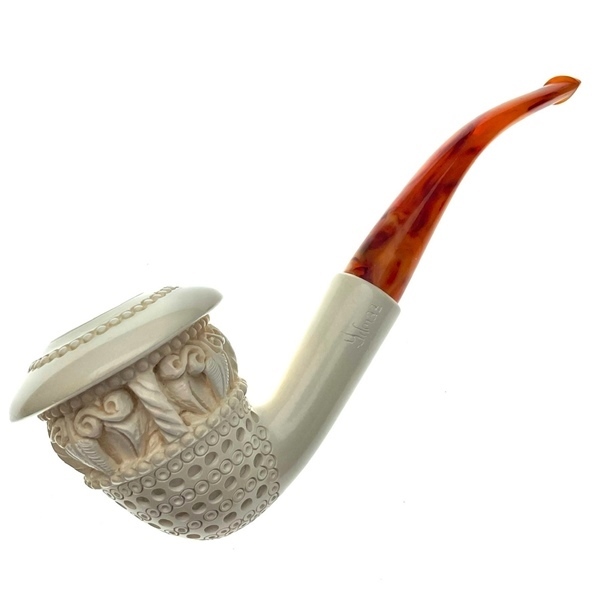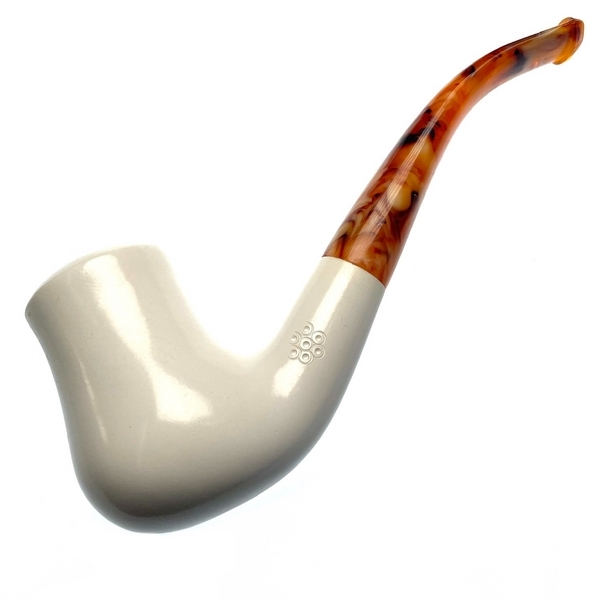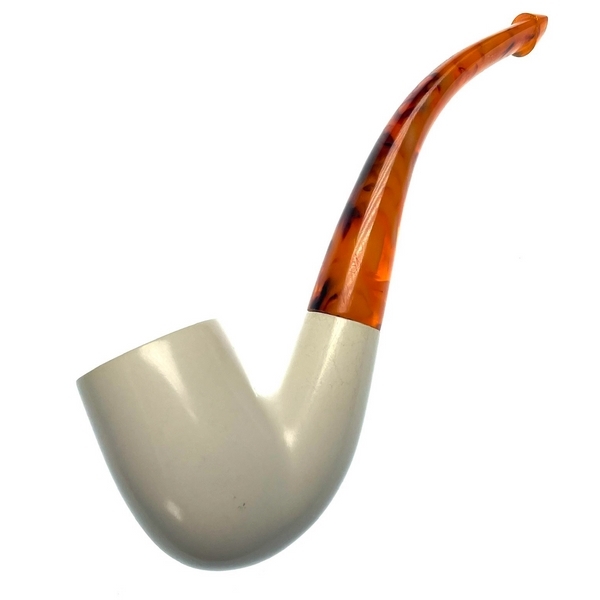When it comes to tobacco pipes, the stem serves a dual purpose. Its first job is to facilitate a smooth, enjoyable smoke, and its second job is to bolster the overall aesthetics of the pipe. In this guide, the team at Paykoc Pipes takes a break from their normal duties to look at pipe stems from various angles.
Tobacco Pipe Stem Materials
The vast majority of stems in both briar and meerschaum pipes are either vulcanite, acrylic or plastic. Let's look at the difference between these materials.
Vulcanite
Also called ebonite, vulcanite is a type of vulcanized rubber. Vulcanite is typically softer than acrylic and is, therefore, easier on the teeth, which appeals to many pipe smokers. If vulcanite has a downside, which prevents it from becoming the runaway dominant material for pipe stems, it tends to oxidize due to its high sulfur content.
Oxidation can cause the vulcanite to become dull in appearance and take on a greenish hue around the bit that is pretty unappealing. The good news is that low-sulfur vulcanite has recently become available that oxidizes much slower, with the greenish color being almost imperceptible. This may be the development that will put vulcanite over the top as the go-to stem material. Only time will tell.
Acrylic (or "Lucite")
Unlike vulcanite stems, acryllic stems do not oxidize and require very little maintenance. The downside of acrylic (also referred to as lucite) is that it's a hard material, making clenching the bit between your teeth somewhat uncomfortable.
In many cases, whether someone chooses an vulcanite or lucite stem will depend on whether they're willing to spend time dealing with oxidation.
How to Tell if a Stem is Vulcanite or Acrylic
To the untrained eye, it can be virtually impossible to tell a vulcanite stem from an acrylic one. But there are things you can look for that will help you determine the stem material.
For instance, acrylic stems tend to be shinier to the point that you may be able to see reflections on the surface. Also, the hardness of the material is often a dead giveaway. If you tap your fingernail against an acrylic stem, it will make a sharp, clicking sound. Tapping a vulcanite stem will create a dull sound because the soft vulcanite absorbs the shock rather than reflecting it outward.
Finally, if you're unsure whether a stem is a vulcanite or acrylic, rub it back and forth a few times with one of your fingers and then hold it to your nose. If you detect a rubbery smell, it means it's vulcanite.

Plastic
You may have heard that many pipes use plastic stems to decrease production costs. In truth, the only pipe maker that uses plastic stems is Missouri Meerschaum, the world's largest maker of corn cob pipes. That's not to say plastic doesn't have its upside. It does. It's typically easier on the teeth than acrylic, and a plastic stem can last for years. Nonetheless, plastic stems are rarely found on quality tobacco pipes.
Pipe Stem Materials Compared
Review the following comparison of acryllic, plastic, and vulcanite tobacco stems to determine the best choice for your needs.
| Feature | Plastic Stems | Acrylic Stems | Vulcanite Stems |
|---|---|---|---|
| Durability | Less durable, prone to cracking | Highly durable, resistant to impact | Moderately durable, can oxidize over time |
| Maintenance | Easy to clean, but may scratch easily | Easy to clean and maintain | Requires regular polishing to prevent oxidation |
| Comfort | Less comfortable, can feel cheap | Comfortable, smooth texture | Very comfortable, softer feel |
| Aesthetics | Less visually appealing, basic appearance | High gloss, available in various colors | Classic look, can polish to a high shine |
| Cost | Generally the most affordable | Moderately priced | Often more expensive due to quality |
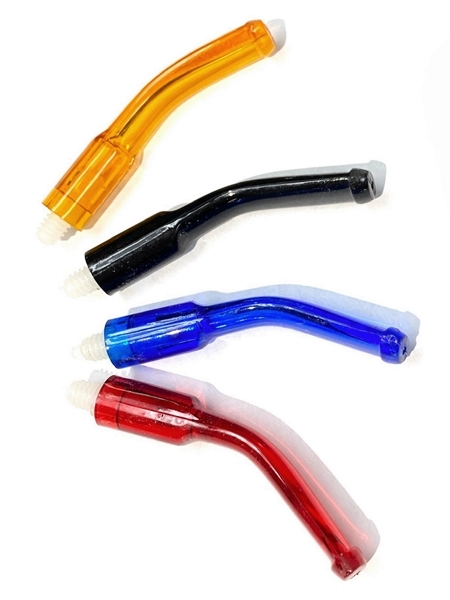
Bent Stems Vs. Straight Stems
Tobacco pipes may have straight stems, stems with a partial bend, or full bend stems. There are pros and cons associated with each stem type, which we've outlined in the following table.
| Type of Pipe | Pros | Cons |
|---|---|---|
| Straight Stem | Easier to clean | Less comfortable for clenching between teeth |
| No need to separate stem for cleaning | Simpler design, which may be less stylish | |
| Traditional, classic look | ||
| More durable when warm | ||
| Partial Bend | Balanced weight distribution for clenching | Slightly harder to clean compared to straight |
| Offers a mix of style and practicality | May require some disassembly for thorough cleaning | |
| More comfortable than straight for long usage | Less stable on flat surfaces when not in use | |
| Full Bend | Best for clenching due to lower center of gravity | Hardest to clean among the three types |
| Distinctive and stylish look | Requires disassembly for thorough cleaning | |
| Comfortable for extended smoking sessions | More fragile due to the curved design |
Fishtail vs. P-lip
At first glance, you may not notice much difference between a fishtail bit and a P-Lip bit. It's easy to understand why. Both feature a raised ridge at the end of the stem that's there mostly to facilitate clenching; when it comes to fishtail bits, pipe smokers sometimes need to try several before they find one that's in their comfort zone.
P-Lips bits are proprietary bits produced exclusively for Peterson Pipes. They're cosmetically similar to standard fishtail bits, but the slot of the P-Lip bit directs smoke upward toward the roof of the mouth in order to reduce tongue bite. While that's a noble idea that appeals to a lot of people, some are less than thrilled by the fact that P-Lip bits can make a pipe a little harder to clean.
Saddle Stem Pipes vs. Tapered Stem Pipes
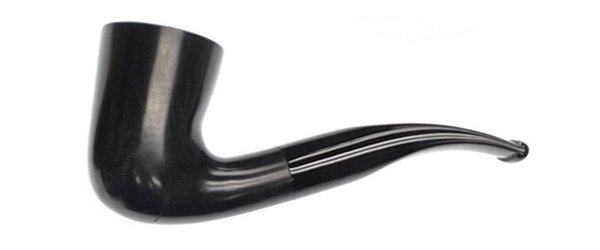
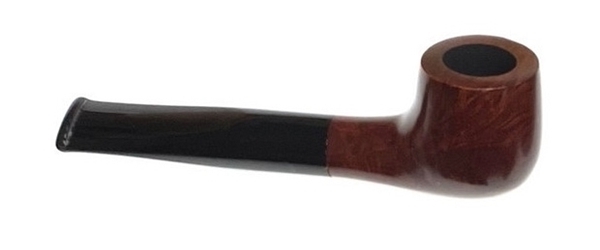
These terms describe the way the stem tapers from where it joins the shank to the bit. A tapered stem will do just that: taper gradually from the shank to the bit. A saddle stem will extend just a short way from the point where the shank and stem meet and then abruptly narrow and stay narrow all the way to the bit. Both designs have their upside and downside, and choosing one is strictly a matter of personal preference.
Browse Pipes of Every Style in Our Online Pipe Shop
The stem is one of the most important parts of any tobacco pipe playing a significant role in both the functionality of the pipe and its aesthetics. Most pipe stems today are fashioned from either vulcanite or acrylic with vulcanite being softer and acrylic harder, but requiring less maintenance.
If you're looking for the highest quality retail or wholesale tobacco pipes, look no further than the Paykoc Pipes online store. We carry an impressive array of briar and meerschaum pipes that employ acrylic and vulcanite stems in a variety of styles, including tapered and saddle stems, fishtail, and P-Lip bits.

 US Dollars
US Dollars
